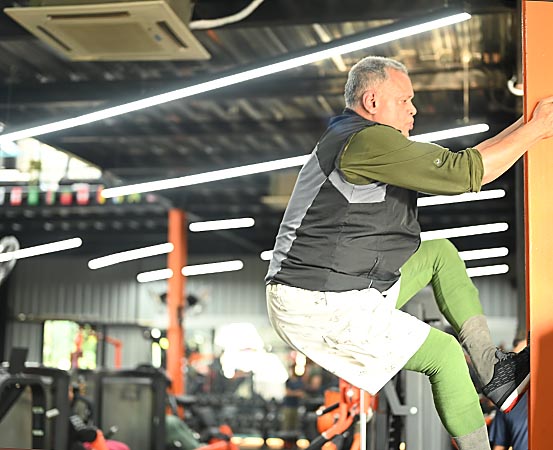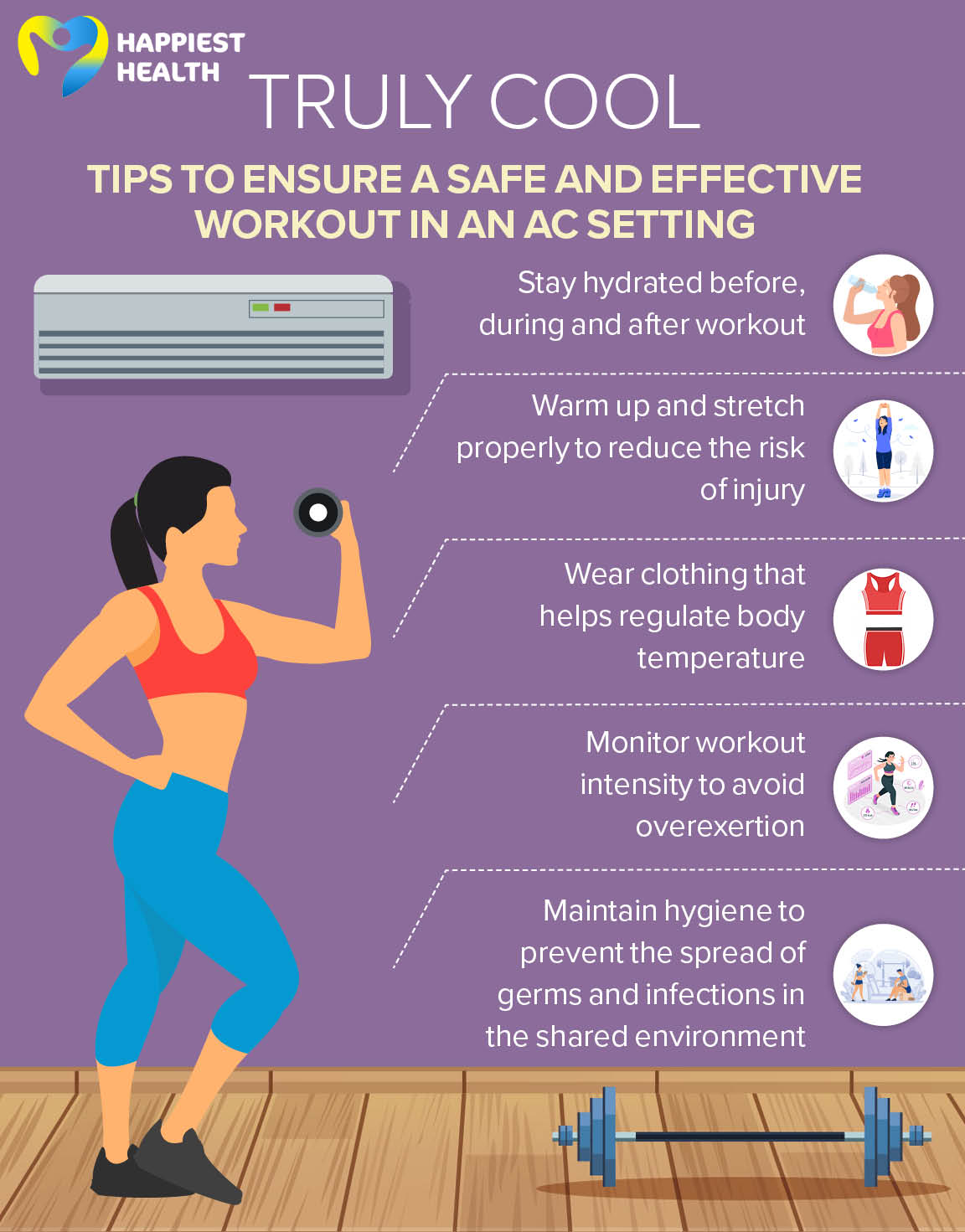
With the mushrooming of gyms and fitness studios, working out in air-conditioned halls or rooms has become the norm. Performing exercises in an AC gym or room has its benefits as well as flip sides. The key is to get the exercise routine, clothing, the AC settings and dynamics of the room or gym right so that the pros outweigh the cons.
It is known that exercising in an AC room can help increase the duration of the workout. The climate-controlled environment provides a sense of calmness that helps to keep the focus on the task.
“In an AC room or gym, the amount of exertion will be less because you will be sweating less and the capacity to do workout is increased,” says Dr Sandeep Ghanta, consultant, internal medicine, Citizens Speciality Hospital, Hyderabad.
Working out in an AC setting
Working out in an air-conditioned hall or gym improves endurance, aids in recovery and reduces chances of heatstroke or heat exhaustion.
The ideal temperature for an AC workout hall is between 20 and 25 degrees Celsius.
“The AC room used for workout should have a proper and periodic circulation of fresh air,” says Dr Ghanta. “The temperature should be maintained at the optimum range too, and that will help reap more benefits.”
Benefits of exercising in AC gyms
- Comfort: Working out in an air-conditioned environment provides relief from heat and humidity, which can be uncomfortable and lead to physical and mental fatigue.
- Reduced dehydration: AC rooms prevent excessive sweating and reduce dehydration. Plus, you can potentially exercise more.
- Improved air quality: Air-conditioning filters out dust, allergens and pollutants.
- Lowers risk of heat-related illnesses: Exercising in an AC setting can reduce the risk of heat exhaustion, heatstroke and other heat-related illnesses.
- Reduces humidity-related problems: Air-conditioning can reduce the risk of mildew growth, which can cause respiratory issues.
- Keeps you calm: Air-conditioning can help reduce stress and anxiety by creating a comfortable and calm workout environment.
- Reduces allergy: AC filters out allergens such as dust, pollen and pet dander, limiting your exposure — and thereby allergy symptoms.
Disadvantages of exercising in AC gyms
- Dry skin: Air-conditioning can cause dry skin, which can lead to itching, flaking and cracking.
- Respiratory problems: Prolonged exposure to air-conditioning can lead to respiratory problems such as dry cough, sore throat and nasal congestion. It is better to work out in a non-AC room if you are doing so early in the morning (before 8am).
- Headaches: Air-conditioning can cause headaches, especially if the air flow is directed towards the head or if the temperature changes rapidly.
- Eye irritation: It can cause eye irritation and dryness, leading to itching, redness and fatigue.
- Fatigue: Prolonged exposure to AC vents can lead to fatigue and lethargy, affecting performance.
- Joint pain: Air-conditioning can worsen joint pain in some individuals, especially in those with arthritis. To avoid this, always maintain the AC temperature in the range of 20 to 25 degrees Celsius.
Plan exercises in both AC, non-AC rooms
Those with health issues such as heart conditions and diabetes should consult a healthcare professional before starting any exercise programme. The expert can advise on the appropriate type, frequency and intensity of exercise and whether it is safe to work out in an AC atmosphere.
“Individuals with certain health conditions may be more sensitive to changes in temperature or humidity and may need to take additional precautions or avoid exercising in an air-conditioned environment altogether,” says Dr Jigar Parmar, a physician from Ahmedabad. “It is important to consult with a healthcare professional to determine the best approach for each individual’s specific health needs.”
Planning a workout regimen that includes exercises with and without air-conditioning will provide a balance between the benefits and potential drawbacks. This can help build endurance and adaptability to different environments while also reducing the risk of injury or discomfort.
Takeaways
- Working out in an air-conditioned room or gym has its benefits and risks.
- It is important to plan a workout regimen that has sessions both in AC and non-AC rooms. This helps iron out the disadvantages and maximise the benefits.


















